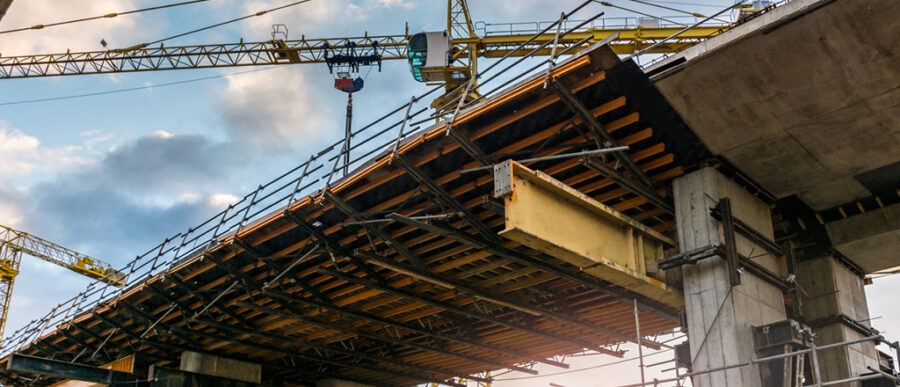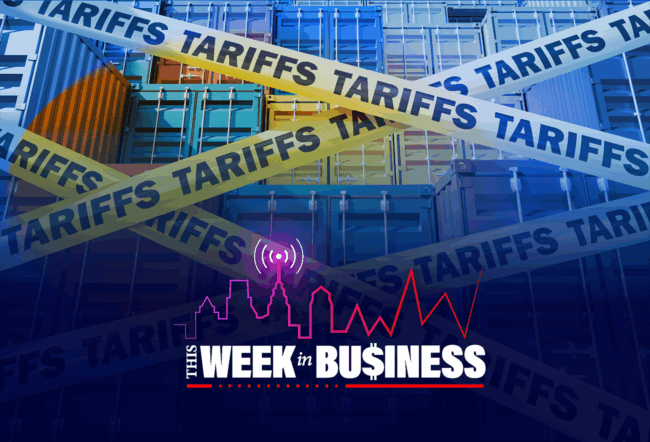The $1 trillion infrastructure bill that the U.S. Senate passed on August 10 is touted as the largest federal investment in infrastructure projects in more than decade. But higher government debt and its effect of crowding out private capital will undermine the impact of public investment. Consequently, GDP growth would be unchanged by the end of the 10-year budget window in 2031 or in the long run up to 2050, according to an analysis by the Penn Wharton Budget Model (PWBM), a nonpartisan initiative that analyzes the economic impact of public policy proposals.
The bill is a compromise over a $2.7 trillion package the Biden administration had proposed in March and a diluted version in June. It comprises $550 billion in new infrastructure investments on top of $450 billion in funding for existing programs. Its biggest allocations are for transportation, including roads ($121 billion), rail service ($66 billion), public transit ($39 billion), and airports ($25 billion). Other notable allocations are for power infrastructure ($73 billion), water infrastructure ($50 billion), and high-speed internet ($65 billion).
All of those investments “will be in productive assets,” PWBM’s senior economist Jon Huntley said on the Wharton Business Daily show on SiriusXM. (Listen to the podcast at the top of this page.) Huntley conducted the PWBM study along with John Ricco, associate director of policy analysis, and Efraim Berkovich, director of computational dynamics.
Huntley noted that the bill also recognizes the importance of investing in increasing access to digital assets with its allocation for high-speed internet, and in clean energy with an allocation for electric vehicle infrastructure such as charging stations and electric buses ($15 billion). With those allocations, this bill reflects the priorities for both Republican and Democratic senators, and the administration, he added. Its passage in the Senate by a 69-30 vote was “uncommonly bipartisan,” as The New York Times noted. The bill will go next to the House of Representatives.
“[The latest] version of the bill uses more deficit financing, and this offsets the positive effects from infrastructure investment.” –Jon Huntley
Missed Gains
But the way those investments are proposed to be financed will erode some of the gains they could have potentially generated, according to Huntley. “[The latest] version of the bill uses more deficit financing, and this offsets the positive effects from infrastructure investment a little bit more than it did in the June bill,” he said. “The positive effects on GDP are a little bit smaller now. They’re closer to zero than they were before.” Overall, GDP does not change in 2031, 2040, or 2050, PWBM concluded.
According to PWBM’s analysis, the June version would have increased government debt by 0.4% between now and 2031, but progressively reduced it by 0.9% before 2050. But in the latest bill, government debt would grow by 1.3% by 2031 and 0.6% by 2050. Under the March plan, government debt would have increased by 1.7% by 2031 but fall by 6.4% by 2050, according to PWBM projections.
A PWBM explainer on infrastructure investment captured how such investments boost the productivity of private capital and labor. For example, it noted that improved transportation allows private firms to get their goods to market at a lower cost, which raises both the value of the firm’s capital to private investors as well as the value of the labor that they employ.
“Even with current government borrowing rates being at historical low values, higher government debt mitigates the positive impact of public investment, as U.S. and international savings are diverted from private capital investment toward public debt,” PWBM said in its latest analysis. “The additional public capital makes workers more productive, but this is offset by the decline in private capital, which makes workers less productive,” it noted. “Overall, workers’ productivity is unchanged, which is reflected in wages that do not change in 2040 and 2050.”
Revenue Downers
According to PWBM’s analysis, the bill will be funded by $132 billion in new tax provisions and $351 billion in new deficits. The spending allocations are mostly unchanged between the June version and the latest bill; most of the changes in the latest version are on the revenue side, Huntley noted. The June version had envisaged higher tax revenues from increased IRS enforcement with audits and investigations ($100 billion), but that has been replaced by other provisions that are expected to bring in much less revenue, such as increased cryptocurrency reporting requirements ($28 billion) and fees on government-sponsored enterprises ($21 billion).
“When we create new public infrastructure, we create additional economic activity. Public infrastructure raises people’s wages.” –Jon Huntley
Much of the bill’s provisions will be paid for with additional borrowing, Huntley continued. “They’re taking money that would have [otherwise] been returned to the U.S. Treasury, either through spectrum auctions ($87 billion) or unused COVID funds ($205 billion) and applying those to pay for this bill.”
Among the new revenue sources the bill has identified is the sale of oil from the Strategic Petroleum Reserve in the private market ($6 billion). It helps that “oil prices are pretty reasonable these days,” Huntley said. But that will be only a “temporary windfall,” since the government would have to buy back that oil later to replenish the stockpile, he pointed out.
Growth Effects
The bill also identifies $56 billion in revenues from “dynamic scoring,” which captures the total fiscal impact of policy changes, including secondary economic effects. Huntley explained how that happens: “When we create new public infrastructure, we create additional economic activity. Public infrastructure raises people’s wages. It raises the returns to capital. It makes people more productive, and that’s reflected in higher GDP.”
The bill’s impact on GDP growth is “closer to zero” because it has not identified as many new sources of revenue as in earlier versions, Huntley said. But some elements of the bill will not be easily captured in GDP calculations, such as the health benefits that will accrue from investments in water infrastructure, he added.
The overall upshot from analyzing the bill is that the outcomes of investments depend on how they are financed, Huntley noted. “The choice of the revenues that you use to build out [infrastructure] has additional economic effects [beyond those] from public infrastructure. And certain types of taxes may be more or less efficient than the sources of financing that they’ve settled on.”



